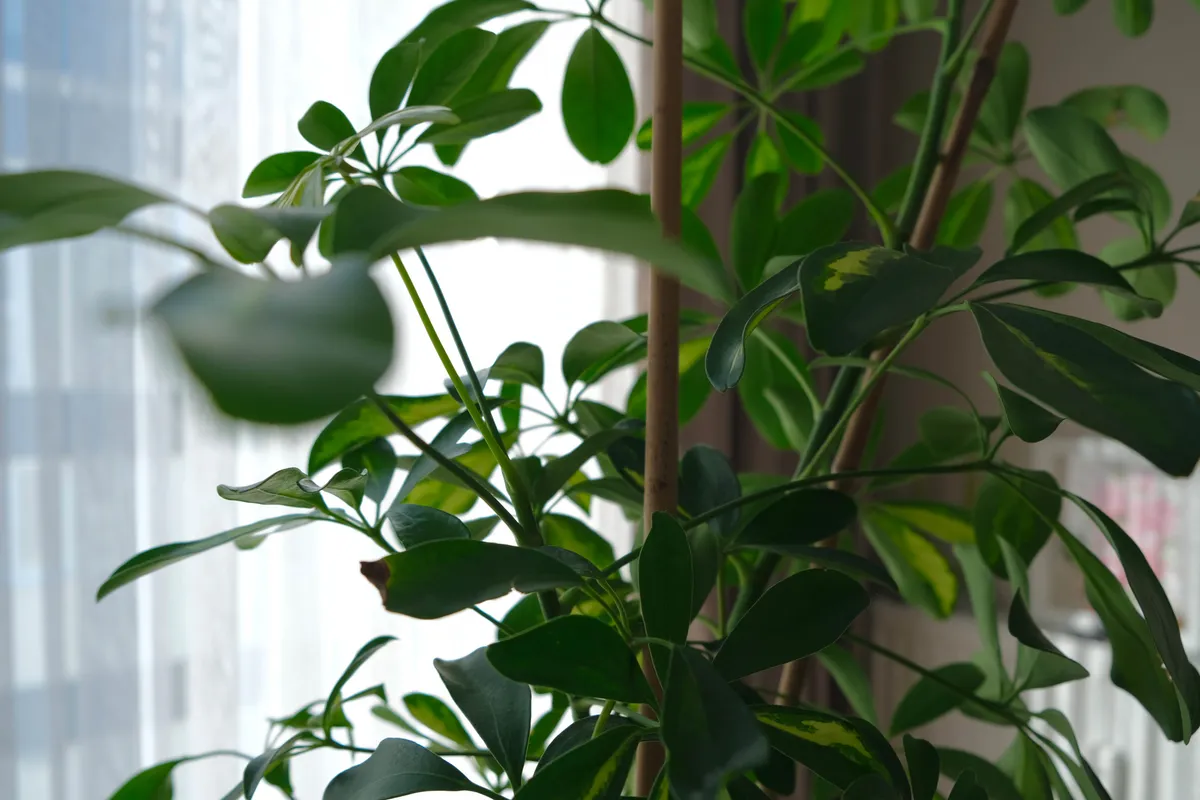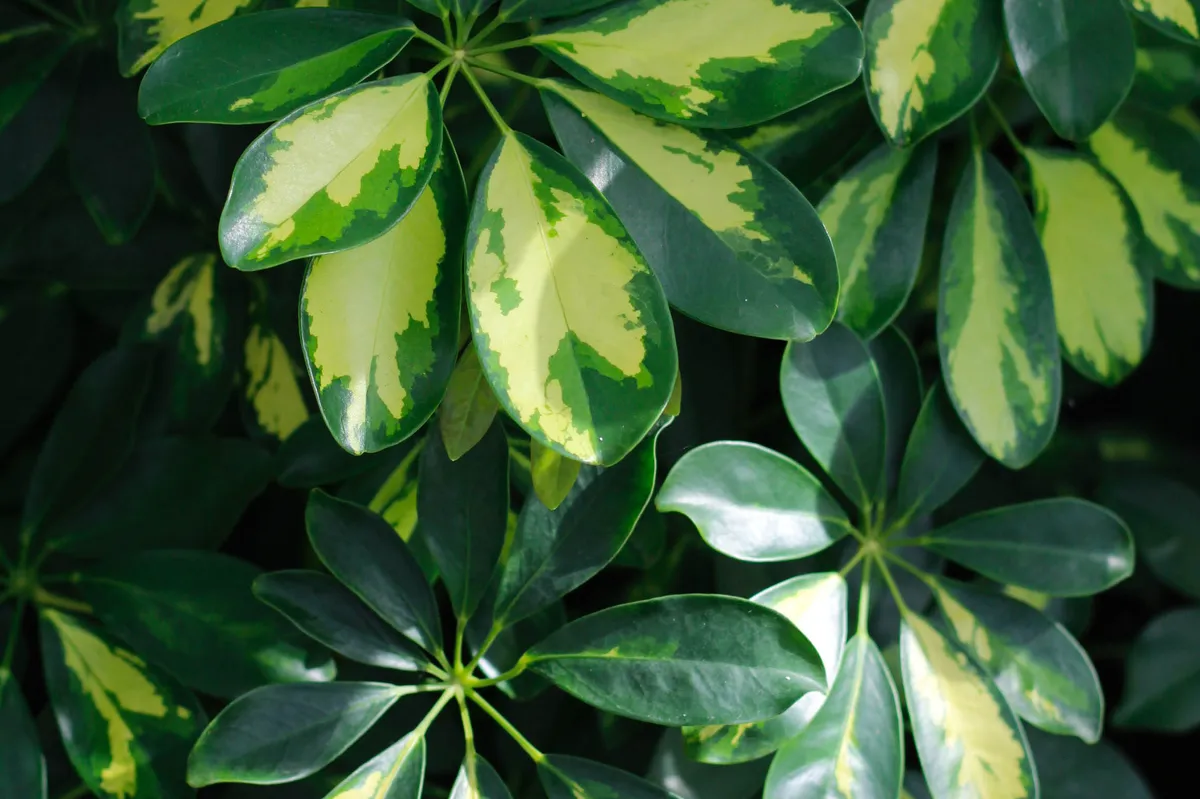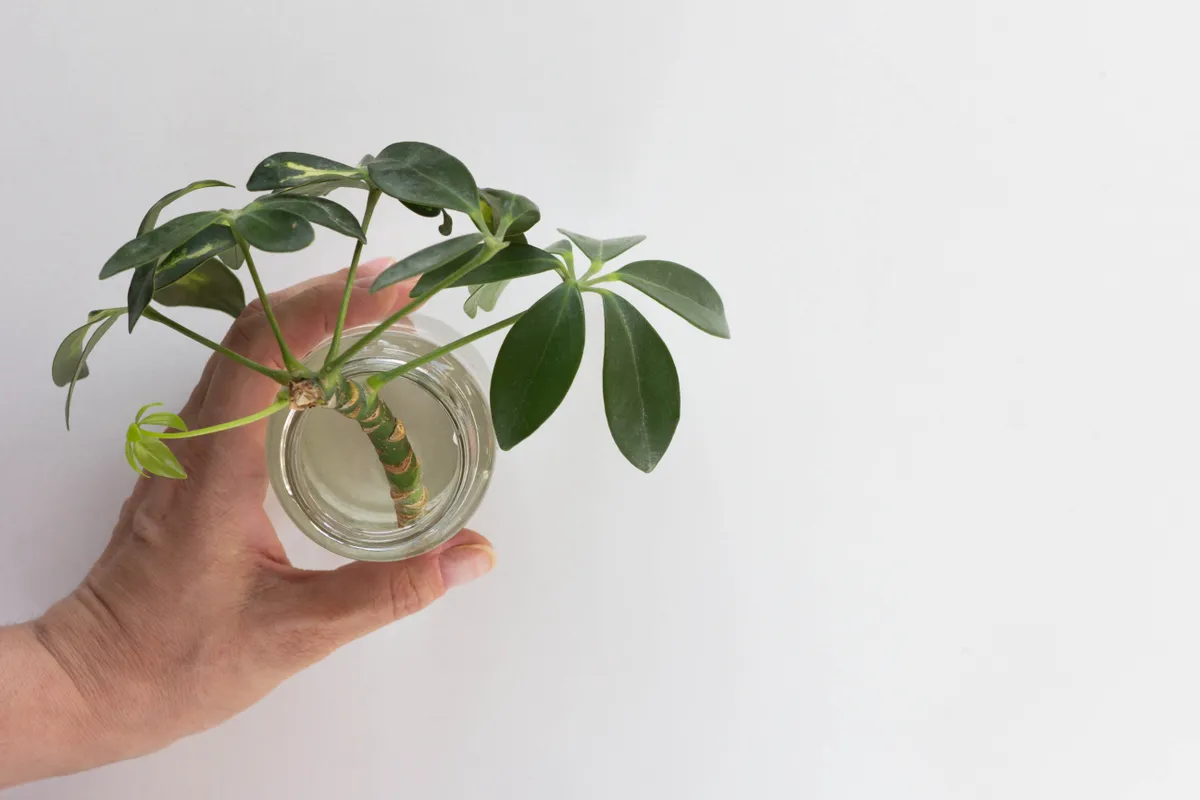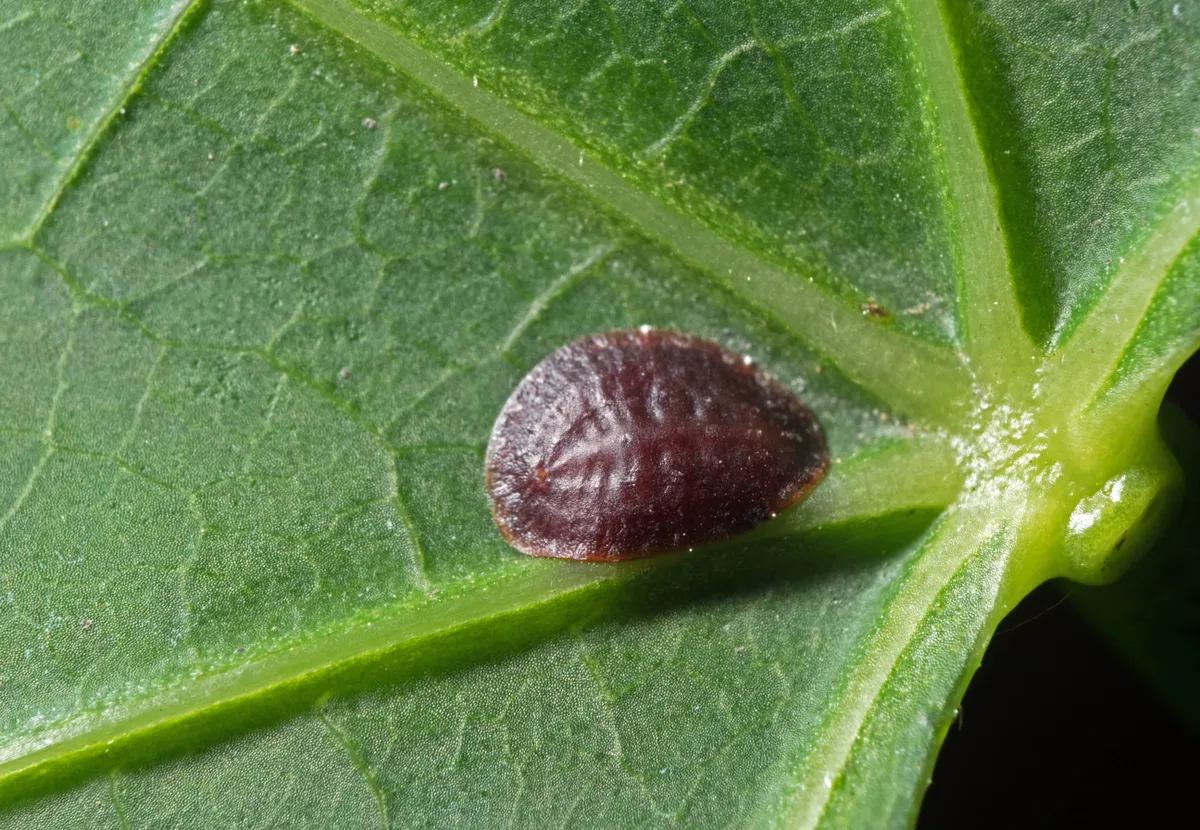What draws house plant enthusiasts to umbrella plants or umbrella trees (Schefflera) are their attractive leaves that resemble the fingers and palm of a hand – or umbrellas.
Schefflera arboricola is the most popular umbrella plant. Known as the dwarf umbrella tree, it reaches around 3m indoors. It is multi-stemmed. There are various cultivars of Schefflera arboricola, some with variegated or golden colourings to their leaves. Schefflera arboricola 'Variegated', for example, has patches of cream, which generally run around the ends of leaves but can also cover the whole leaf, while Schefflera arboricola ‘Gold Capella’ has streaks of yellow running through its leaves.
Schefflera actinophylla can grow up to 15m. In the wild it is a multi-stemmed tree; in a pot it won’t get quite this big but given the right conditions it can quickly outgrow its space.
How to care for an umbrella plant

How much light does an umbrella plant need?
Umbrella plants originate from lower down in the canopy of rainforests and therefore prefer indirect, bright light. If grown in a slightly darker place they will just grow more slowly and plants may become drawn and leggy. Turn your plant every week to keep it straight and prevent it from falling as it leans over towards the light.
How much humidity does an umbrella plant need?
Umbrella plants are adapted to drier environments and don’t need high humidity to thrive.
Read our myth buster: Do you really need to mist your house plants?

How often to water an umbrella plant
Umbrella plants do not need much watering – allow the compost to start drying out before watering.
How to prune a schefflera house plant
There is no need to prune a schefflera plant, but pinching it out at the tip will encourage a bushier, more stable plant. Umbrella plants produce no hard wood and are prone to snapping easily, so be careful when handling.
When to repot an umbrella plant
Repot your schefflera every year, or when the roots begin to grow out of the bottom or top of the pot. If your plant is too large to handle, scrape away as much soil as you can from the top of the compost surface using a fork, and replace with fresh.
How to propagate an umbrella plant

Umbrella plants can be propagated by taking cuttings. Cut a long shoot, around 10cm long, near the main stem and insert into water until it has developed roots, then place in a small pot filled with house plant compost. Alternatively, you can root schefflera cuttings in soil.
Umbrella plant problems
Red spider mite
Schefflera can be prone to spider mites and soft scale insects. Spider mites feed by piercing and sucking plant tissue and thrive in dry conditions. During hotter weather, they will reproduce quickly so check regularly – in fact checking over your plant whenever you water to pick up problems early is one of the best things you can do with all houseplants to keep them healthy. To spot the first signs of spider mite, look out for speckled chlorosis on the top of the leaf. Turn it over, and if you look closely you will be able to see the mites, which are about 1mm long. Treat with soapy water on a cloth or spray, and monitor closely in the following few weeks. You may need to repeat this treatment to stop eggs from hatching.
Scale insects

Soft scale insects feed by sucking sap from the plant tissues. When they feed they excrete a sticky, sugary substance called honeydew, which attracts a fungus known as sooty mould. They are highly active crawlers before they permanently settle with their protective shell and can be found particularly along the midrib and veins of the leaves. Look out for sticky shiny patches on the leaf surface, and treat by wiping or picking them off and keep checking back for more on a weekly basis. If a pest becomes established, it is always worth cutting out leaves or pruning out heavily infested areas, and always move a houseplant with a pest away from others in your collection.
Here's more on the best large houseplants to buy